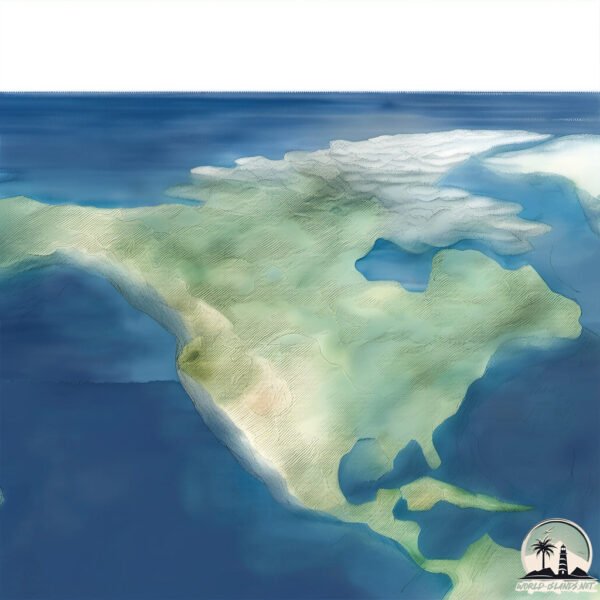Welcome to Ross Island , a Continental island in the Hudson Bay, part of the majestic Arctic Ocean. This guide offers a comprehensive overview of what makes Ross Island unique – from its geography and climate to its population, infrastructure, and beyond. Dive into the details:
Geography and size of Ross Island
Size: 9.533 km²Coastline: 20.3 kmOcean: Arctic OceanSea: Hudson BayContinent: North America
Ross Island is a Small Island spanning 9.5 km² with a coastline of 20.3 km.
Archipel: Haida Gwaii – An archipelago off the northern coast of British Columbia, Canada, known for its rich indigenous Haida culture and lush, temperate rainforests.
Tectonic Plate: North America – Covers North America and parts of the Atlantic and Arctic Oceans, characterized by diverse geological features and varying levels of seismic activity.
The geographic heart of the island is pinpointed at these coordinates:
Climate and weather of Ross Island
Climate Zone: ContinentalClimate Details: Dry-Summer Subarctic ClimateTemperature: Cold Summer
Climate Characteristics: Short, mild summers with significantly less moisture, and prolonged cold periods. Found in northern, inland regions.
Topography and nature of Ross Island
Timezone: UTC-05:00Timezone places: America/New_YorkMax. Elevation: 83 m Mean Elevation: 31 mVegetation: Herbaceous CoverTree Coverage: 29%
The mean elevation is 31 m. The highest elevation on the island reaches approximately 83 meters above sea level. The island is characterized by Plains: Flat, low-lying lands characterized by a maximum elevation of up to 200 meters. On islands, plains are typically coastal lowlands or central flat areas.
Dominating Vegetation: Herbaceous Cover
Vegetation: 7 vegetation zones – Very Highly Diverse Island
Infrastructure and Travelling to Ross Island
Does the island have a public airport? no .
Does the island have a major port? no .
The mean population of Ross Island is 0 per km². Ross Island is Uninhabited. The island belongs to Canada .
Continuing your journey, Bélanger Island is the next notable island, situated merely km away.
Andaman's Abandoned Ross Island | Azadi Ka Amrit Mahotsav | I Love My India E51 | CT
Kamiya Jani visited the lost city of Ross Island of Andaman and Nicobar Islands which is now been named Netaji Subash ...
Andaman's Abandoned Ross Island | Azadi Ka Amrit Mahotsav | I Love My India E51 | CT
Kamiya Jani visited the lost city of Ross Island of Andaman and ...
Kamiya Jani visited the lost city of Ross Island of Andaman and Nicobar Islands which is now been named Netaji Subash ...
What Happened to India's GHOST ISLAND?
(Ross Island)
India's very own Ghost Island used to be very different! It used to be ...
India's very own Ghost Island used to be very different! It used to be a tropical paradise for the British. They made the tiny Ross ...
Ross Island Andaman | Port Blair | Andaman and Nicobar Islands | Andamans Travel Series | Part 1
Andaman Tour | Ross Island ( Netaji Subhash Chandra Bose Dweep ) Port ...
Andaman Tour | Ross Island ( Netaji Subhash Chandra Bose Dweep ) Port Blair | Andamans Travel Series | Cinematic | Part 1 ...
Canada is classified as Developed region: G7: Group of Seven – Major advanced economies, including Canada, France, Germany, Italy, Japan, the United Kingdom, and the United States. The level of income is High income: OECD.
News – Latest Updates and Headlines from Ross Island
Stay informed with the most recent news and important headlines from Ross Island. Here’s a roundup of the latest developments.
Loading...
Please note: The data used here has been primarily extracted from satellite readings. Deviations from exact values may occur, particularly regarding the height of elevations and population density. Land area and coastline measurements refer to average values at mean high tide.

